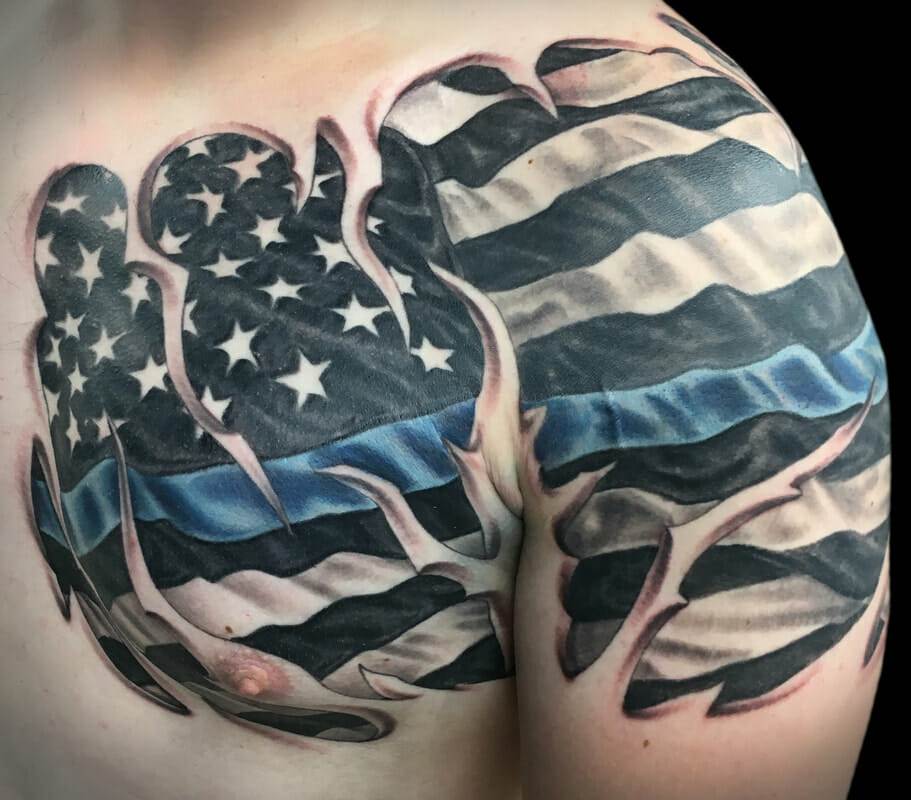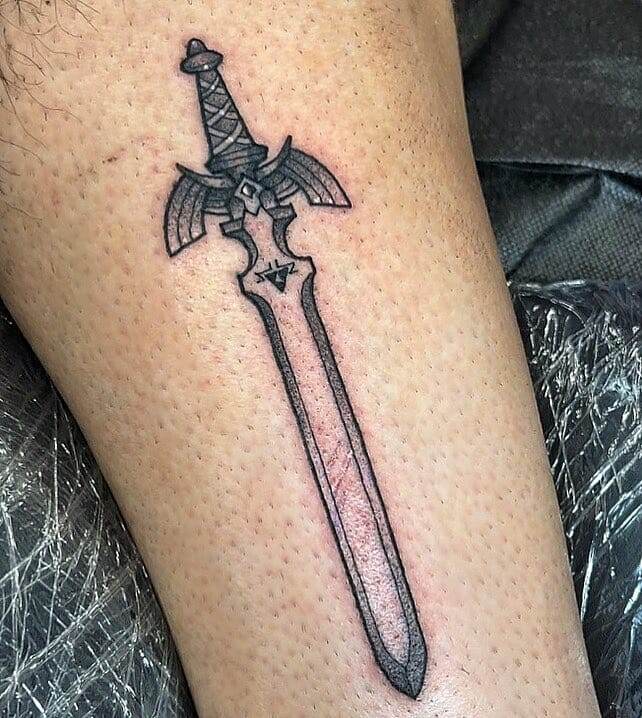Tattoos have been a part of human culture for thousands of years, with ancient civilizations using pigments and techniques to adorn their bodies. Over time, tattoo art has evolved from a traditional practice to a modern form of self-expression. Today, tattoos are seen as a blend of tradition and innovation, as artists push the boundaries of creativity and experiment with new techniques and styles.
Evolution of tattoo art: From ancient tradition to modern innovation
Tattooing has a long history, dating back to ancient Egypt, where mummies have been discovered with intricate designs etched on their skin. It was also prevalent in various other ancient cultures, including the Greeks, Romans, and Polynesians, each with their own unique styles and meanings attached to the tattoos.
In the modern era, tattoo art became popular among sailors and soldiers, representing their bravery, loyalty, and heritage. However, it was considered a taboo in many societies, and the designs were often limited to simple symbols and names.
The fusion of tradition and innovation in modern tattooing
Today, tattooing has evolved into a thriving art form that combines traditional techniques with modern innovations. Tattoo artists now have access to advanced equipment, high-quality pigments, and a wide range of artistic styles to choose from.
- Traditional tattoo styles, such as tribal, Japanese, and American traditional, have become iconic and continue to be popular among tattoo enthusiasts.
- Modern tattooing techniques, such as watercolor tattoos and realism, have pushed the boundaries of what is possible in tattoo art.
- The use of innovative tools like tattoo machines and needles has improved the precision and speed of the tattooing process.
- Tattoo artists are also incorporating new elements like 3D effects, geometrical patterns, and abstract designs to bring a unique and contemporary touch to their work.
Tables For Comparisons:
| Traditional Tattoo Art | Modern Tattoo Art |
|---|---|
| Symbolic meanings | Self-expression |
| Limited color palette | Unlimited color options |
| Manual techniques | Advanced machinery |
| Simple designs | Elaborate and intricate designs |
| Cultural significance | Personal significance |
In conclusion, tattoo art has come a long way from its ancient origins to its current form as a modern and innovative art form. The fusion of tradition and innovation in tattooing has allowed for endless possibilities in design and self-expression. Whether it’s a simple symbol with deep meaning or a detailed, colorful mural on the skin, tattoos continue to captivate and fascinate people around the world.
Traditional Tattoo Techniques
Traditional tattooing techniques and styles
Traditional tattoo styles have become iconic and continue to be popular among tattoo enthusiasts. These styles include tribal, Japanese, and American traditional tattoos. They often incorporate bold lines, solid colors, and traditional symbols, representing deep meanings and cultural significance.
Traditional tattooing techniques typically involve manual processes, where the artist uses handheld tools to create the design. These tools may include bamboo sticks, bone needles, or metal rods. The ink is applied to the skin using a tapping or scratching motion, resulting in a distinctive style, often characterized by bold outlines and limited shading.

Traditional tattooing is also known for its limited color palette, often using black and red ink to create contrast and impact. This simplicity and focus on boldness and symbolism make traditional tattoos stand out.
In contrast to modern tattoo art, traditional tattoos are often simpler in design, with clear lines and minimal shading. The emphasis is on the representation of cultural or personal significance, rather than hyper-realistic details.
In conclusion, traditional tattoo techniques have a long history and are still appreciated and practiced today. The focus on symbolism, limited color palette, and manual processes make traditional tattoos unique and timeless. Whether someone chooses a traditional or modern tattoo, both forms represent personal expression and artistry. It’s amazing to see how tattoo art has evolved over time while still honoring its ancient roots.
Innovation in Tattoo Machines and Tools
Evolution of tattoo machines
Tattoo machines have come a long way since the early days of traditional tattooing. In the past, handheld tools such as bamboo sticks, bone needles, or metal rods were used to create tattoo designs. However, with the advancements in technology, tattoo machines were developed to simplify and improve the tattooing process.
The electric tattoo machine, invented by Samuel O’Reilly in 1891, revolutionized the industry. This machine replaced the manual tapping or scratching motion with an automated process, allowing artists to work faster and more efficiently.
Modern advancements in tattooing tools and equipment
Today, tattoo artists have access to a wide range of tools and equipment that enhance their work. Some of these advancements include:

- Rotary tattoo machines: These machines use a rotating motor to create precise and smooth lines. They offer greater control and versatility compared to traditional coil machines.
- Wireless tattooing devices: Innovative wireless tattoo machines have been introduced, allowing artists to move freely and work without the limitations of cords and cables.
- Advanced needle configurations: Tattoo needles have evolved to provide greater precision and control. Modern needle configurations allow for more intricate and detailed designs.
- Tattoo inks: The range of tattoo inks available today has expanded significantly. Artists now have access to a wide spectrum of colors, including vibrant and long-lasting options.
- Sterilization and safety protocols: The tattoo industry has placed a strong emphasis on safety and cleanliness. Disposable equipment, single-use needles, and strict sterilization protocols ensure that the tattooing process is safe for both the artist and the client.
Innovations in tattoo machines and tools have allowed artists to push the boundaries of tattoo artistry. With improved precision, efficiency, and safety measures, modern tattooing has become a blend of traditional techniques and contemporary advancements. Whether someone chooses a traditional or modern tattoo, they can now expect a high level of artistry and professionalism in the tattooing process.
Fusion of Traditional and Modern Themes
Incorporating traditional symbols and motifs in modern designs
Tattoo art has always been deeply rooted in cultural and traditional symbols. However, with the advancement of tattooing tools and techniques, modern designs have evolved to incorporate these traditional elements in innovative ways. Tattoo artists now combine traditional symbols and motifs with modern aesthetics to create unique and meaningful designs. This fusion allows artists to pay homage to the rich history of tattooing while also embracing contemporary artistic expressions.
Modern interpretations of traditional tattoo themes
Traditional tattoo themes such as anchors, swallows, roses, and nautical symbols have stood the test of time. However, modern interpretations of these classic themes offer a fresh and unique perspective. Artists experiment with different styles, colors, and techniques to breathe new life into traditional designs. This allows clients to have a tattoo that carries the symbolism and meaning of the past while reflecting their personal style and preferences.
The fusion of traditional and modern themes in tattoo art showcases the versatility and artistic growth in the industry. Tattoo artists are continuously pushing boundaries and exploring new avenues for creative expression. Whether it’s incorporating traditional symbols in contemporary compositions or reimagining classic designs, this fusion has created a vibrant and dynamic tattoo culture that celebrates both the roots and the evolution of tattoo art.



